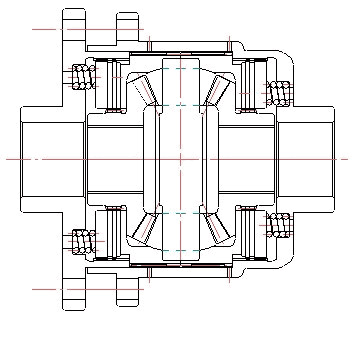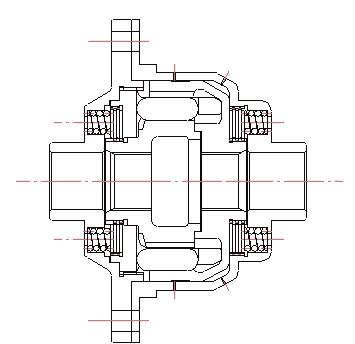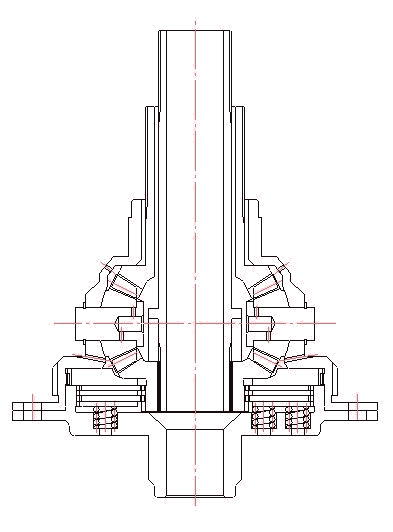Differential
Coppia frenata differential
KINEMATICAL AND TECHNICAL FEATURES
The main features are:
Instantaneous starting.
Automatic take-up.
Residual torque, or in other words, the vehicle is capable of running even if an axle-shaft breaks. Possibility of changing the locking percentage setting according to needs. Working is inversely proportional to the torque applied to the differential. The substantial difference between self-locking differentials and braking torque ones is that while the former start working only after the skidding of a wheel due to lack of adhesion, the latter, the torque braking differentials instead, prevent this skidding because the brakes prearranged inside the differentials are always working.
Tests on the road, and infinite other occasions, can only demonstrate the substantially different steering, especially when the asphalt has become slippery with rain.
GENERAL NOTES
Use only lubricant for limited slip differentials with specific formulation E.P. (Extreme pressure).At the moment of ordering, always indicate for which type of vehicle the differential will be employed and whether it will be used for racing or only for private use in order that we may know the appropriate setting of the differential.
ASSEMBLY
The braking torque differential is interchangeable with the current production differential housed in the vehicle.
PATENTS
826679 - 1260168 GB - 1903126 D

Duo - block differential
KINEMATICAL AND TECHNICAL FEATURES
The Duo-Block differential consists of two, side, torque limiting devices and of a central self-locking system.
The two limiting devices consist of steel disks, alternately fitted into the planetary hubs and into the internal surface of the differential casing; they are kept pressed together by means of metal-clad springs at the bottom of the differential casing and by the cover furnishing " the braking torque " giving:
Instantaneous working.
Automatic take-up.
Residual torque, i.e. the vehicle may run even if an axle-shaft breaks.
The possibility of changing the setting and, hence, the locking percentage, according to the requirements of the use of the vehicle or to driver's sensibility, particularly for those participating in sports races.
Working is inversely proportional to the torque applied to the differential.
The self-locking system consists of two drums on which the cames are fitted ( inside on the external drum and outside on the internal drum ) between whose surfaces rollers are supported by an intermediate cage.
This system has the following properties:
Its working is directly proportional to the torque applied to the differential.
Permitted rotation is limited within 8 degrees.
During the skidding stage, the use of rollers presents a rolling friction permitting a gradual locking almost without impacts.
Kinematically speaking, the combination integrating the two contrasting systems enables the vehicle to run on any kind of ground without, almost, no difficulties. It is specially suitable for competition use, both on race-tracks and on uneven roads. Among its many advantages, the Duo-Block has only one defect: a certain noise, particularly during parking. It is not recommended for vehicles to be used on ordinary roads.
TECHNICAL SERVICE
Use only lubricant for limited slip differentials with specific formulation E.P. (Extreme pressure).
At the moment of ordering, always specify the use and the type of the vehicle.
ASSEMBLY
The Duo-Block differential is interchangeable with the current production differential housed in the vehicle.
PATENTS: - 40053A76 I - 13902 77 GB - 77 09877 F - 783 721 USA

Split diff
DIFFERENTIAL AT ASYMMETRIC SPLITTING
TECHNICAL AND KINEMATIC FEATURES
This type of differential, with reduced weight and dimensions, splits the deflecting torque through a spherical epicycloidal system. Possible contact losses of front and rear axle are controlled by a series of disks kept under pressure by a series of springs.
Percentages of asymmetric splitting are:
1° Front 56% Rear 44%
2° Front 50% Rear 50%
3° Front 44% Rear 56%
Different percentages may be worked out on request.
PATENTS : 28988 I - 28989 I - 28990 I
